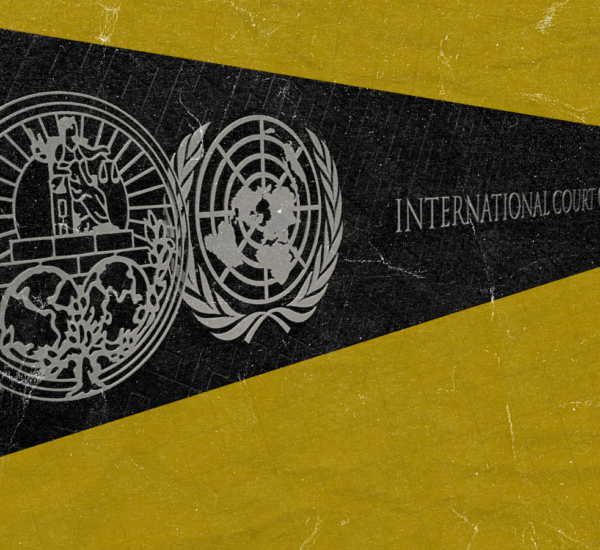
Sonali Chugh
On February 18, almost 13 years and several hearings later, a Special Court in Ahmedabad pronounced death sentences for 38 convicts and life imprisonment for 11 for their role in the 2008 Ahmedabad serial bomb blasts. These blasts occurred over 87 minutes across Ahmedabad, killing 56 and severely injuring more than 200.
Soon after the special court ruling, national and local media recalled the injuries and trauma of the series of blasts. They broadcasted what was termed by one news channel to be a ‘sensational development’ along with sensationalised images of the death and despair it caused. Several newspapers and mainstream news channels lauded the ruling for its tough stance, boasting its significance for dispensing the highest number of death penalties. The verdict became historical.
Taking from the 7000-page ruling, mainstream news channels and fringe news web portals expressed shock at the extent of the conspiracy behind the blasts. In a matter of minutes, the entire debate had shifted to how these blasts were part of a larger conspiracy to ‘eliminate’ the former Chief Minister of Gujarat and current Prime Minister Narendra Modi. Since the judgment itself reiterated the threat to Narendra Modi’s life and the Gujarat government, the death sentences seemed even more justifiable. Moreover, it allowed the media coverage of the verdict to be far removed from the victims of the blasts and the loss, suffering, and grief wrought upon them.
In this post, I argue that what spread, as a result, was not so much the memory of the actual event but a reconstructed remembrance. Together, the media and the court reconstructed the memories of the Ahmedabad bomb blasts. In light of this verdict and its coverage, I will examine how the judgment resurrected and remembered the blasts’ impact and reenacted the trauma inflicted by it. I argue that in its attempt to repair the injuries to the victims, it ended up pronouncing a verdict motivated by vengeance. Further, working with the assertion that remembering and forgetting are political and tied with the idea of a collective and nation, I argue that the judgment and mediatized discourse on it created a new kind of event memory. This memory itself, I argue, was hinged on the rhetoric of vengeance.
In this article, I do not attempt to critique the legal reasoning behind the verdict. Instead, I try to understand what the ruling did after its pronouncement, particularly upon receiving loud coverage in the media. While the event was remembered in various media forms including news websites, newspapers, and social media platforms, this piece will focus on its coverage in mainstream television news channels.
Repairing and Reenacting
Soshana Felman writes that the ‘law tries to contain the trauma’ and attempts at ‘repairing’ collective historical injustices (Felman, 2002:5). These attempts, I argue, were apparent in the Ahmedabad blasts verdict too.
For instance, when addressing the question of quantum of punishment, the court constantly referred back to the trauma of the victims. In one instance, the accused’s arguments in mitigation of their sentence on grounds of their parent’s illness was rejected by the court, citing the injuries of those who ‘have been suffering from physical pain for the last thirteen years’. Similarly, the defense’s arguments about the accused’s socio-economic disadvantages and the impact of their imprisonment on their family’s financial conditions, were rejected. In doing so, the judge asserted that ‘the situation is even worse in families where there is no breadwinner in the family, even those injured may have to spend a lot of money on treatment and because of this their financial situation may have deteriorated’. Evidently, the court constantly invoked the injuries and trauma of the victims, pitting the accused and the mitigation available in their favour against the victims and their trauma.
Trials, as Felman argues, seek not simply truth but a finality: a force of resolution. However, in attempting to reach this ‘finality’, trials end up ‘re-enacting the trauma’ (Felman, 2002:55), which is what this verdict did. As with most terror trials, this one took a long time to arrive at a resolution that, in theory, sought to ‘repair’ the trauma of the attacks. Thus, as it seems, the verdict was not just trying to repair the trauma of the blast, but was also burdened with its own lapses and delays. Hence, the traumas that the judgment sought to undo and repair were twofold: the trauma of the blast victims that the court reenacted to arrive at its verdict, and the further trauma caused to them due to delays in the judicial process itself.
Not only did the trial reenact the trauma suffered by the victims, but also aligned itself with the state’s project of vengeance and retaliation under the garb of ‘repairing’ the collective injustice caused by the blasts. In this case, the verdict declared the finality of the trial and enacted ‘the finality of the state power’ by awarding the death penalty (Sarat, 2001:11). Austin Sarat argues that the death penalty is the ‘ultimate measure of sovereignty and the ultimate test of political power’ (Sarat, 2001:4). The state’s ability to award capital punishment visibilizes its power and sovereignty. In this case, the court and the judgment were aware of the ‘hope and morality’ they were expected to perform. Thus, granting the death penalty was about more than ensuring justice. It was supposed to symbolize that justice was, in fact, being done. The idea was that, to symbolize justice, the punishment must be so rigorous that it becomes a ‘spectacle of condemnation’ (Sarat, 2001:9).
Thus, while purportedly trying to ‘repair’ the injuries and losses of the blasts’ victims, this verdict instead generated the loud discourse of revenge. One way in which that revenge was performed was through death penalty. The verdict is also an attempt to mute the discrepancies in the legal system and the lapses that are often contained within terror trials.
Remembering through Media: Affecting and Constructing Memory
The loud voiceover and screaming headlines constructed a charged environment, and necessitated a powerful verdict from the court to match.Terror attacks are ‘sensational’ by their very nature, which means they break through the shock defense and are potentially traumatic (Jervis, 2015:5). Soon after the verdict, a bunch of images of terror occupied the mainstream national media for a while, remembering the destruction that the attacks had caused. These images were designed to shock the viewer through gruesome visuals and their ‘circulation and amplification’. (Sengupta & Roy 2013).
They were also meant to represent the injury and trauma of the state and the victims of the blast. However, instead of facilitating the healing of victims of trauma, the representation enabled a nationalistic discourse supported by media spectacle. Moreover, their coverage also worked as an exercise in remembrance that could be invoked from time to time for the state to claim vengeance. While public acknowledgement and remembrance of the victimhood caused by the blasts may be a crucial healing technique in and of itself, remembering victimhood in this instance became not an end in itself, but as a means to the exercise in revenge. The state could claim harsher verdicts to justify rooting out ‘terror’, premised on the ‘experience of violence we suffered’.
Media constantly affects our ways of remembering. Its ubiquity and attachment to the spectacle of terror together contributes to how we form and understand traumatic events and images. It continuously ‘conceals and produces tension between living memory and established history’ (Hansen et al., 2015:4). Doing so enables it to concoct narratives according to the current social frames. The same materialized with the Ahmedabad bomb blast verdict.
A gruesome public event resurged and made its way to social media and prime time, claiming and forming a new kind of mourning, unaffected by the actual event and the great losses that its victims suffered, but affected by the verdict pronounced in trial. Therefore, the remembrance spoke to, not the grief resulting from the blasts, but the vengeance that the verdict transpired. One that was supported in and most suited to the contemporary political context.
After the verdict, ‘Times Now’, an English-language mainstream channel, remembered the entire event through a politicized broadcast. (While other channels ran similar coverage, this reference is intended to explain the media’s overarching response and role in reconstructing memory.) A poster and a collage of passport-sized pictures of all the convicts occupied the screen space on the left. It screamed, ‘ye hain aatank ke 49 chehre, jinhone 56 ki jaan li’ (these are the 49 faces of terror, who murdered 56 persons). On the right ran a speech by the prime minister recalling the Ahmedabad Blasts in a rally in Uttar Pradesh. These moving images accompanied a throbbing graphic, ‘Mandate 2022’, at the top-left corner of the screen.
The speech and the commercially packaged electoral programming precluded the actual grief and mourning that the victims suffered. However, it did mourn the threat that loomed over the government of Gujarat. Instead of remembering the lives lost, the entire narrative was repackaged around the threat and injury that may have happened to then Chief Minister Narendra Modi.
It is important to note how the narrative around the said threat got picked up from the judgment itself. Observing the ‘time planning of the perpetrated crime’, the court pressed on how the blasts were an attempt to oust the Narendra Modi government in Gujarat, ‘which they (accused) wrongly believed to be against Muslims’. Such borrowing, although common, reasserts how the judiciary and media constantly affect each other.
Lawrence Liang writes that ‘because legal events circulate within the spectacular economy of the media, they are both constituted by and complete with forms of public address that the media deploys’. Similarly, in this case, the media sloganeering is hinged on the court’s reimagination of the threat that may have loomed, not over the human victims of the blasts, but over the Gujarat government. By shifting the debate from the victim’s injuries, the media and court reconstructed a memory that never transpired, threatened by a threat that no longer exists.
Remembering and Forgetting
When expounding on the contributions of Jacques Derrida and Walter Benjamin on memory and narrative, Myrian Santos argues that ‘memory is discontinuous and always related to the act of being narrated’ (Santos, 2001:19). Even though it may seem as if memory is bound to time and is continuous, it derives its legitimization from the act of narrative.
When the court, through its judgment, remembers the injury and trauma of an event, it does so through traces of witness accounts and prosecution stories and files. By that fact, they bear the burden of faint, disrupted, and unruly memories. In this, the judgments serve as what Pierre Nora calls ‘lieux de memoir’ or ‘sites of memory’ (Nora, 1989:7). Nora understands sites of memory as any ‘significant entity, whether material or non-material’ that works as a symbolic element of memorial heritage or national memories.
Here, by reiterating and reenacting the trauma of the victims, the judgment is memorializing the remains of the Ahmedabad blasts. Simultaneously, the court is constructing a new memory and narrative. This remembrance and reenactment is part of the court’s resolve to repair the trauma of those it sees as the victim of the blasts.
Similarly, the media chooses the kind of trauma it remembers. This remembrance is contingent upon consumerism and the kind of narrative that the state enables. The same is clubbed with sensationalism, ‘endless promises, shocks, and spills of the new and the transgressive’ (Jervis, 2015:6). When the media chooses to remember only what suits and appeals to the popular, it inadvertently removes individual accounts of loss.
The collective hyperbole forges ahead as the most vital voice, muting and silencing other voices of grief and loss. The court’s attempt at impactful condemnation, through strong language and assertion of state violence, often fuel media sloganeering. As a result, the Ahmedabad blast case and the media representation surrounding it decentered the trauma of its victims, and instead focused on the threat to the state that it constructed and the punishment it justified as revenge in the name of repair.
References
Felman, S. (2002). The juridical unconscious: Trials and traumas in the twentieth century. Harvard University Press.
Hansen, A. H., Hemer, O., & Tufte, T. (2015). Memory on trial: Media, citizenship and social justice. Lit Verlag.
Jervis, J. (2015). Introduction. In Sensational subjects: The dramatization of experience in the modern world (pp. 1–11). essay, Bloomsbury.
Nora, P. (1989). Between memory and history: Les Lieux de Mémoire. Representations, 26, 7–24. https://doi.org/10.2307/2928520
Santos, M. S. (2001). Memory and narrative in social theory. Time & Society, 10(2-3), 163–189. https://doi.org/10.1177/0961463×01010002002
Santos, M.S. (2002) Can We Tell Stories Out of Our Memories? The Contributions of
Derrida and Benjamin. In: Narrative, Memory and Life Transitions. University of Huddersfield, 171-177.
Sarat, A. (2001). The Killing State: Capital Punishment in law, Politics and culture. Oxford University Press, USA.
Sonali Chugh is an Academic Fellow at the National Law University, Delhi. She holds a postgraduate degree in Law, Politics and Society from Ambedkar University. With a background in journalism, she is interested in exploring the intersection of media and law.





